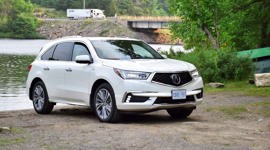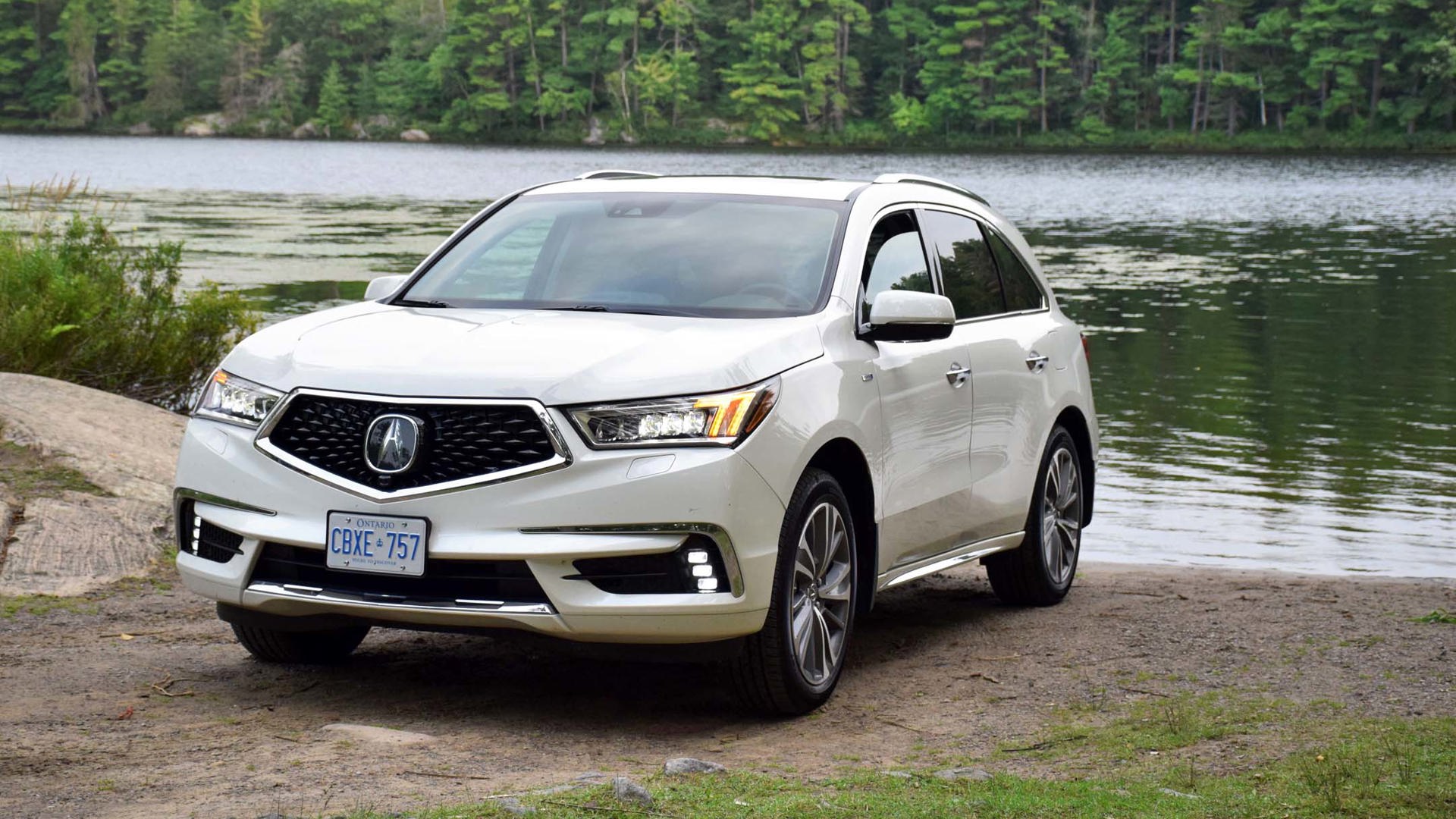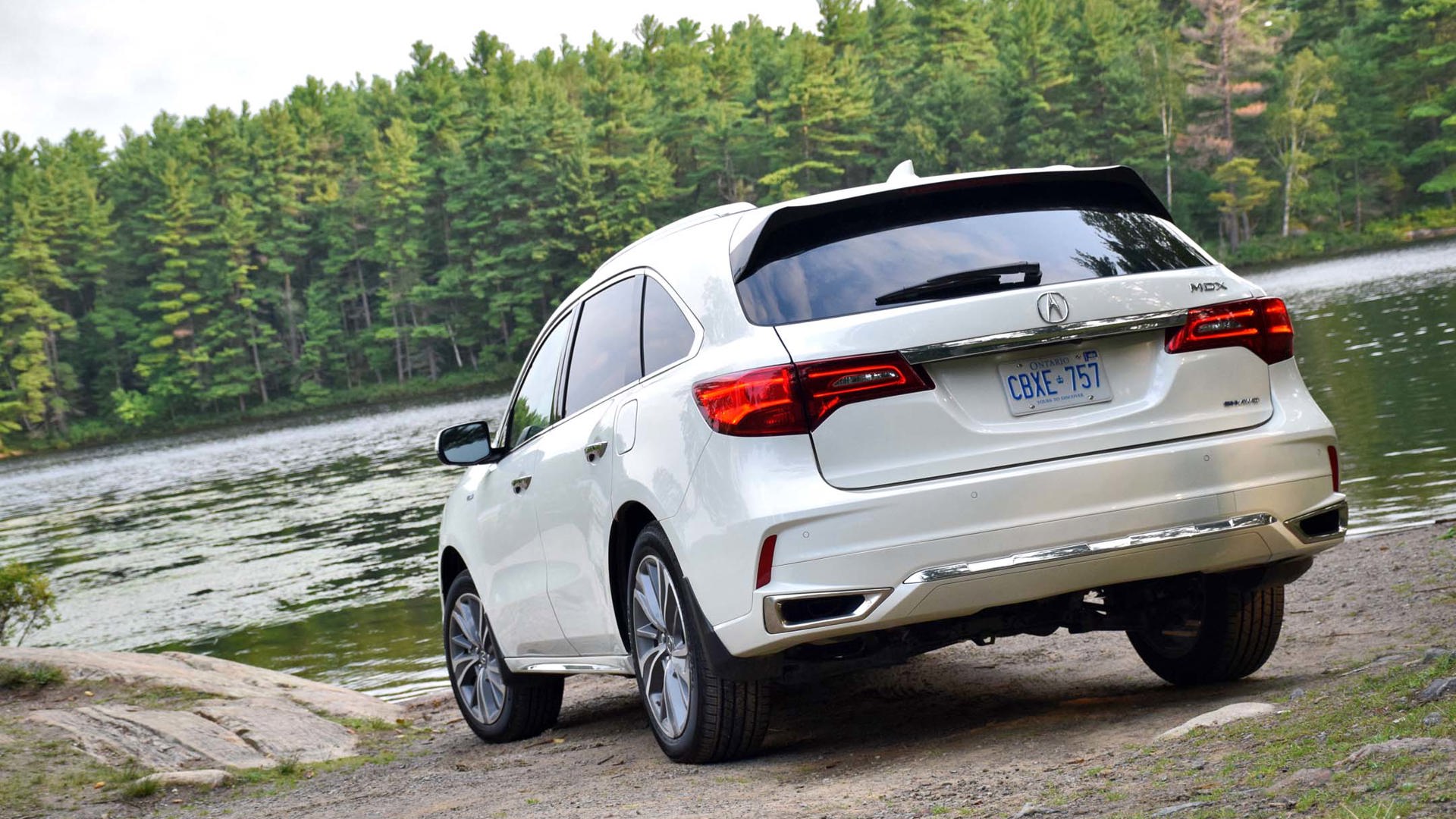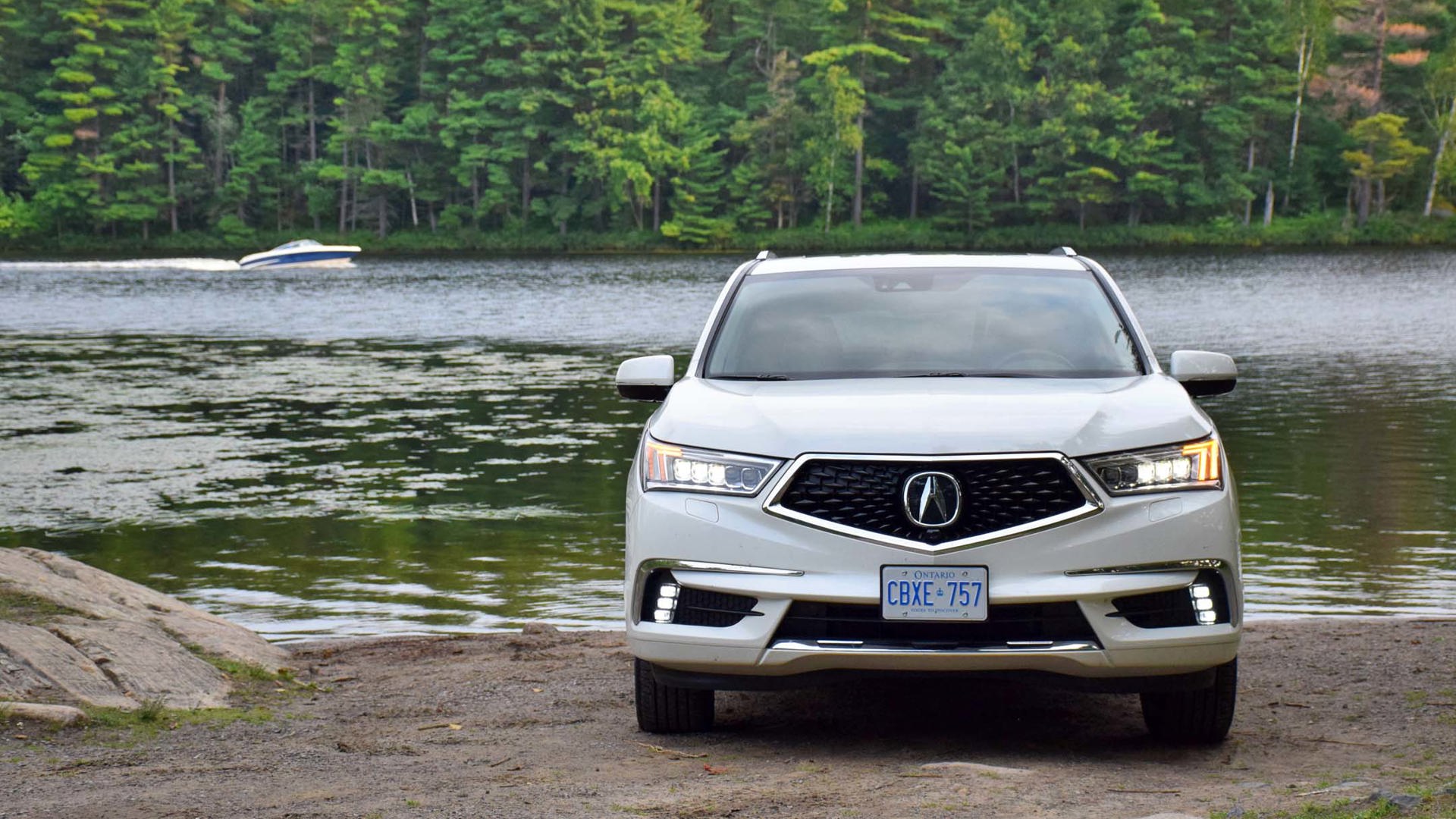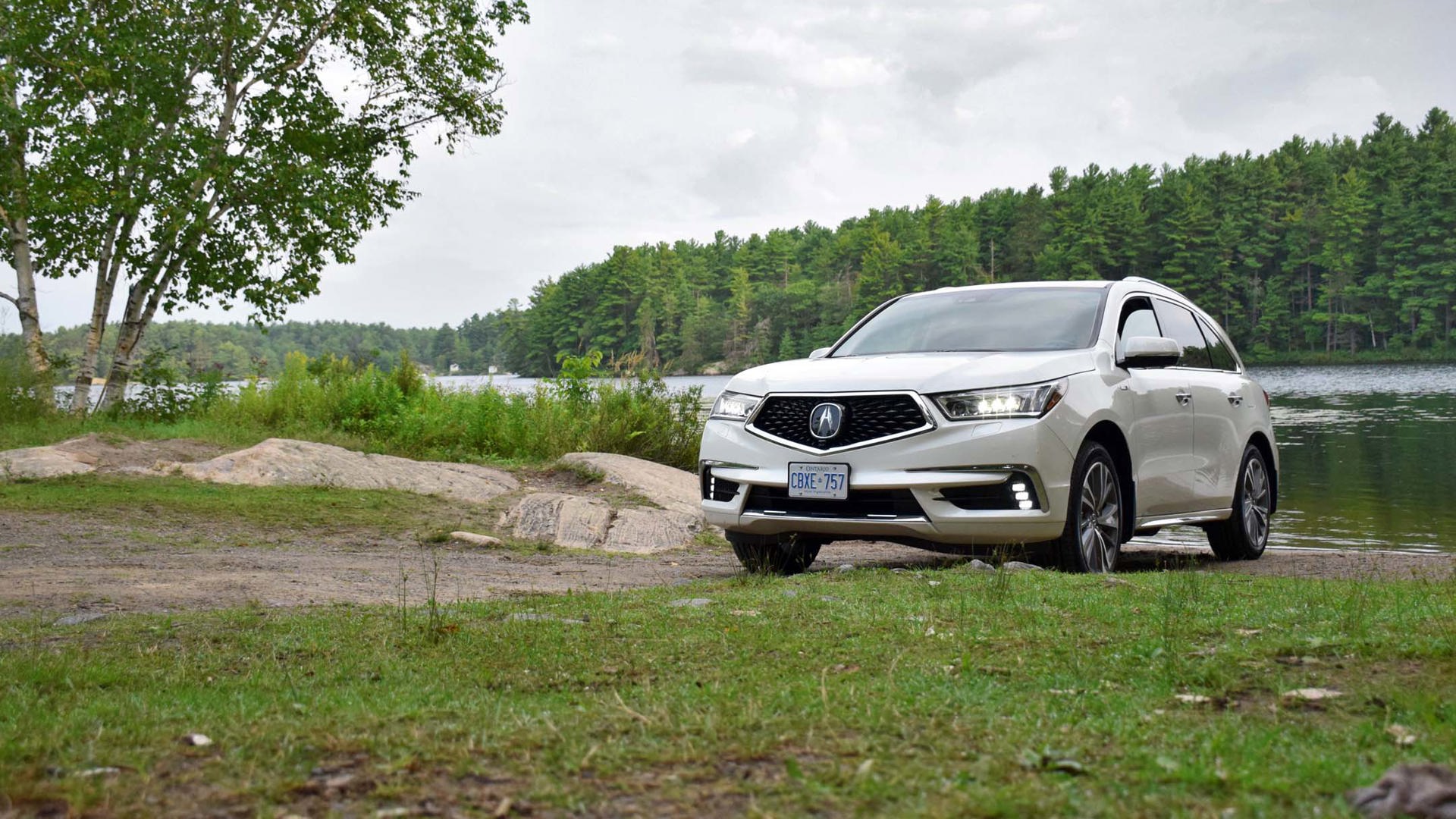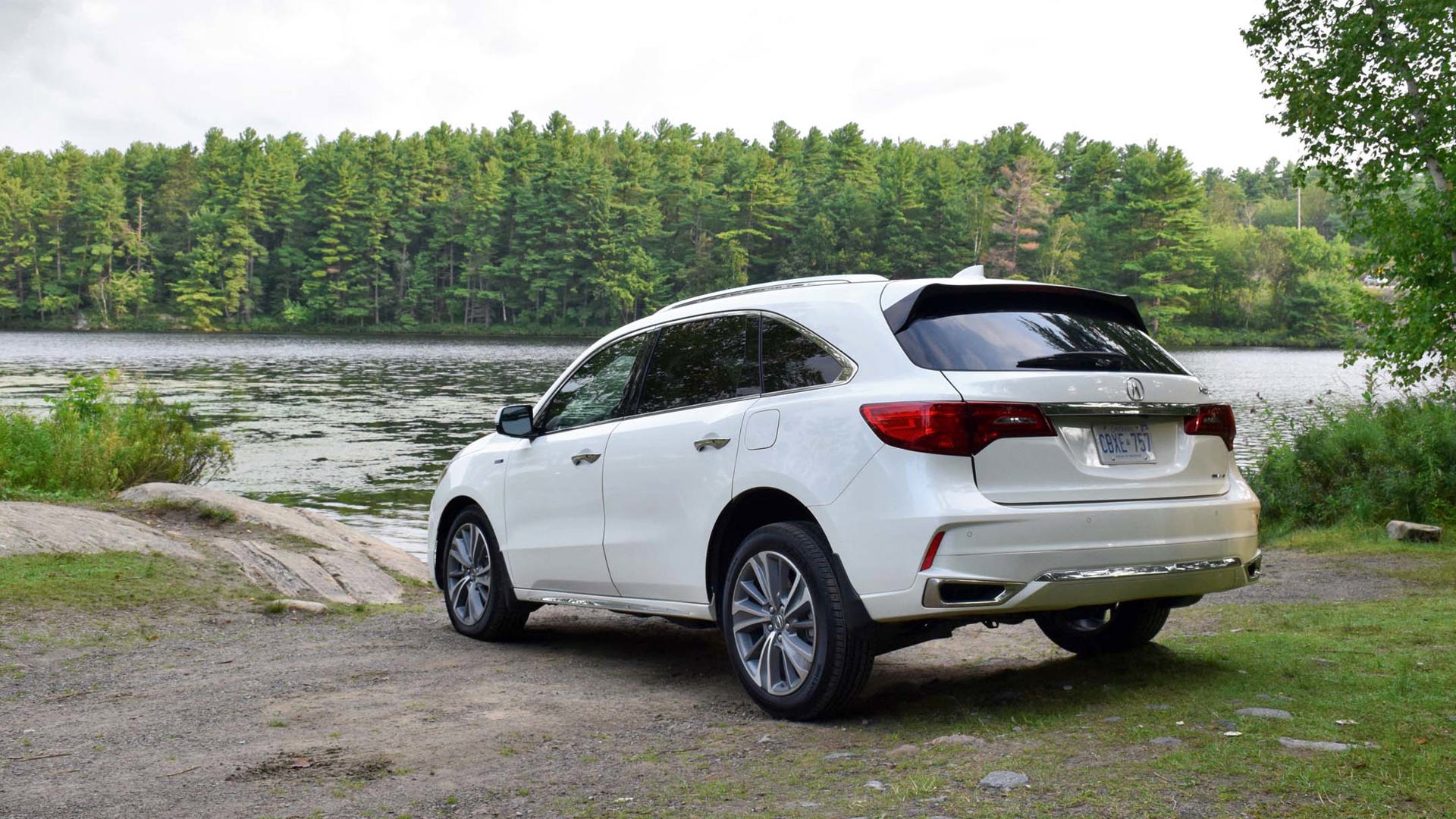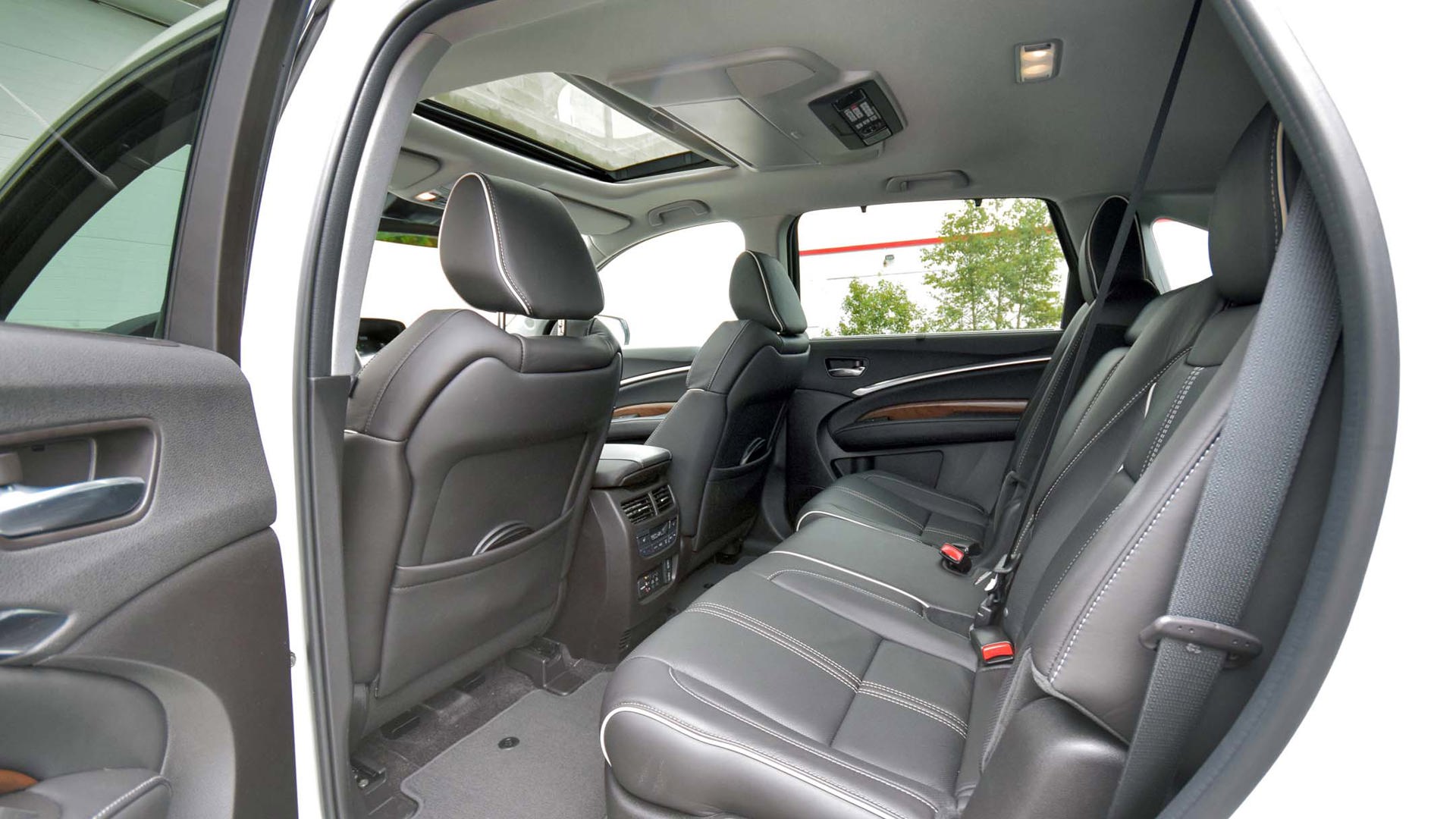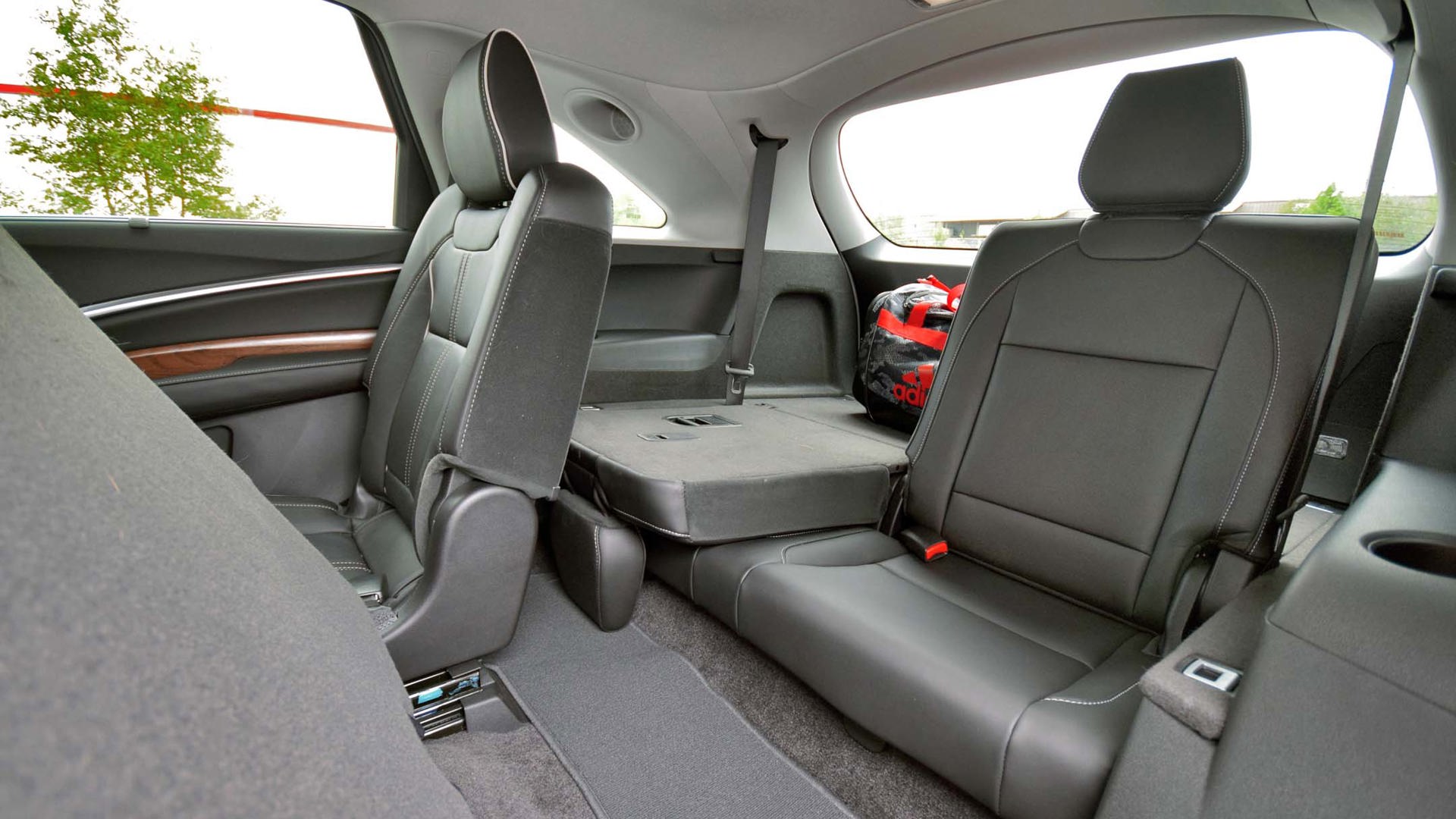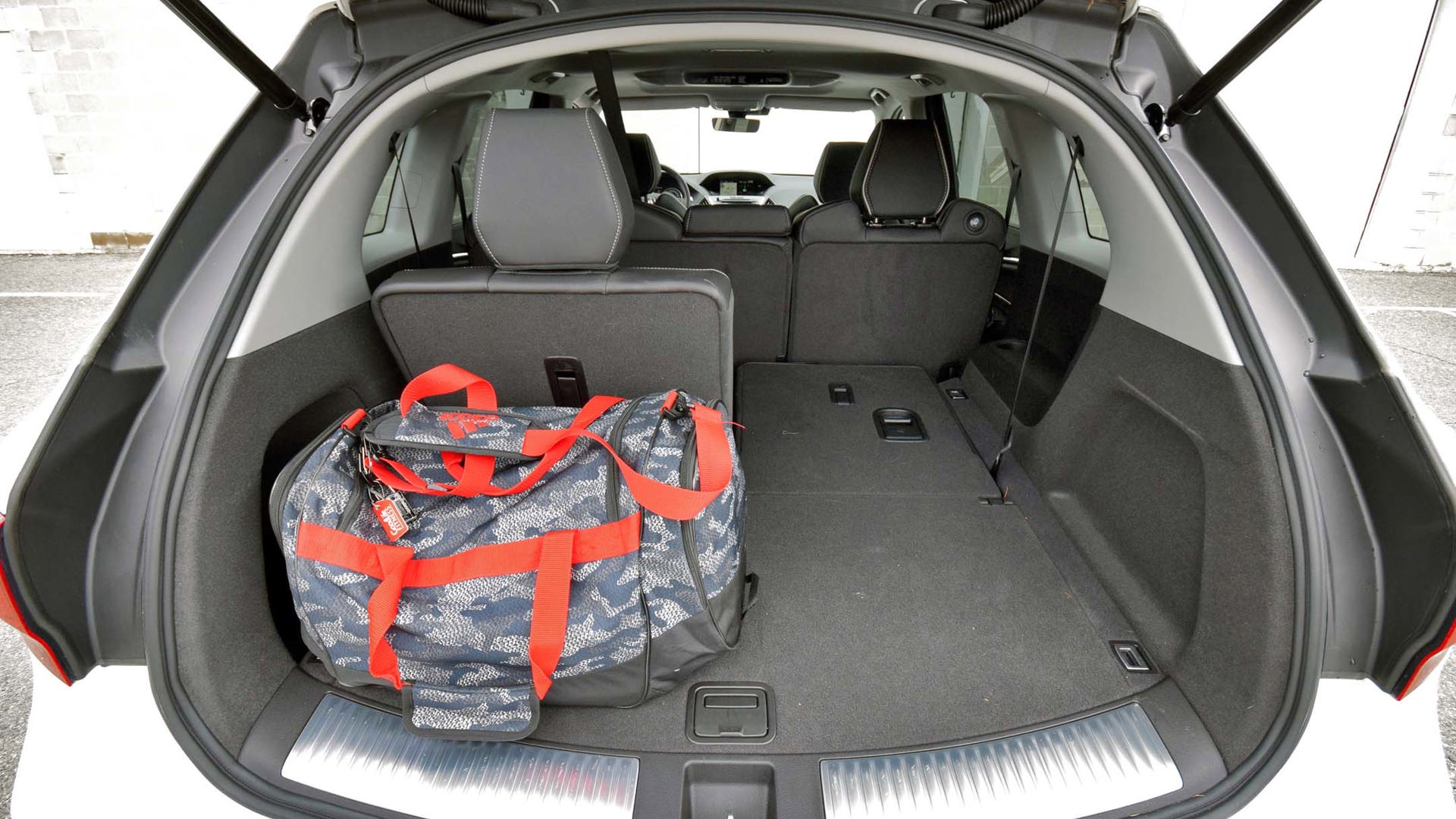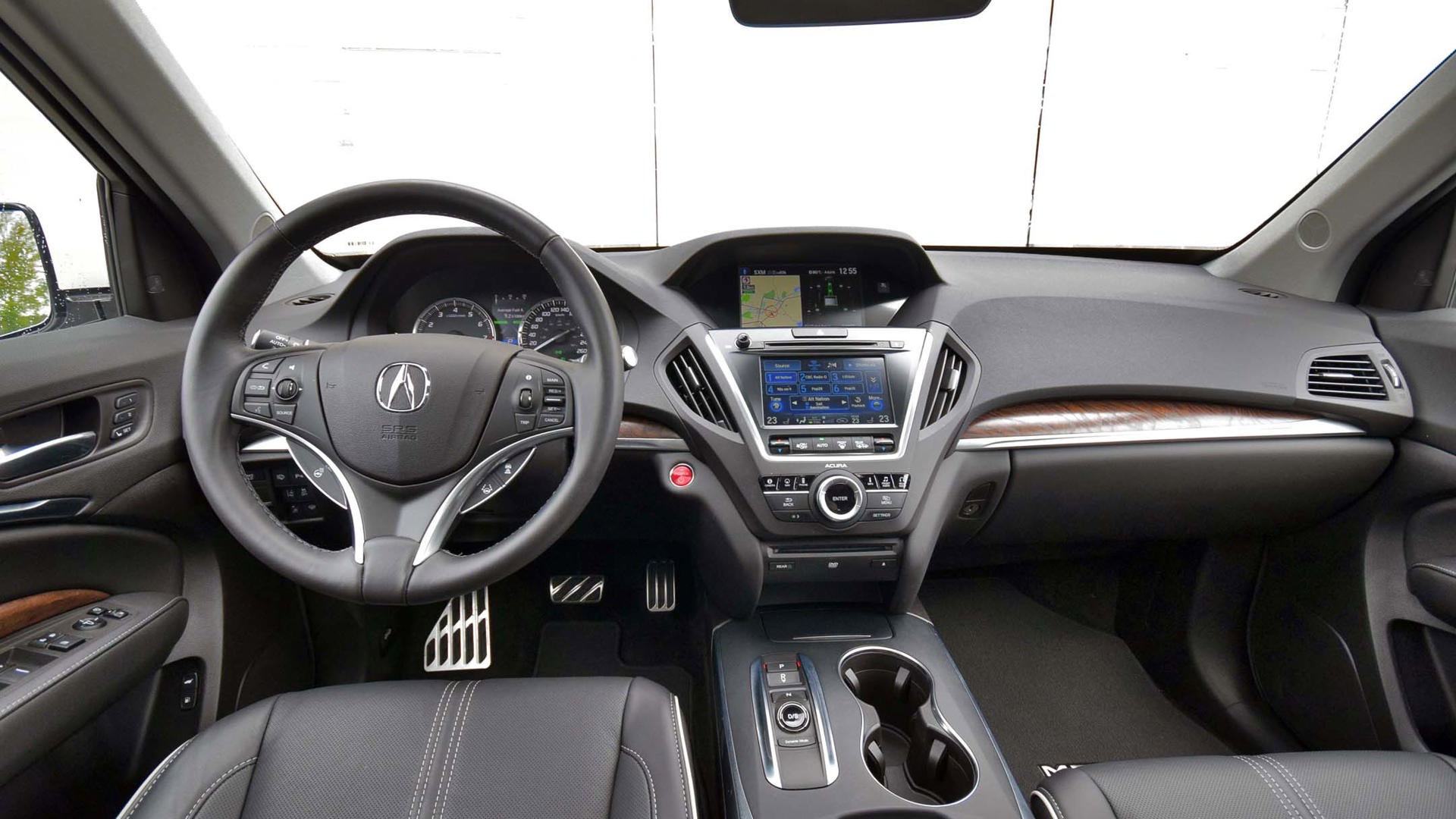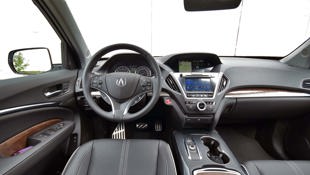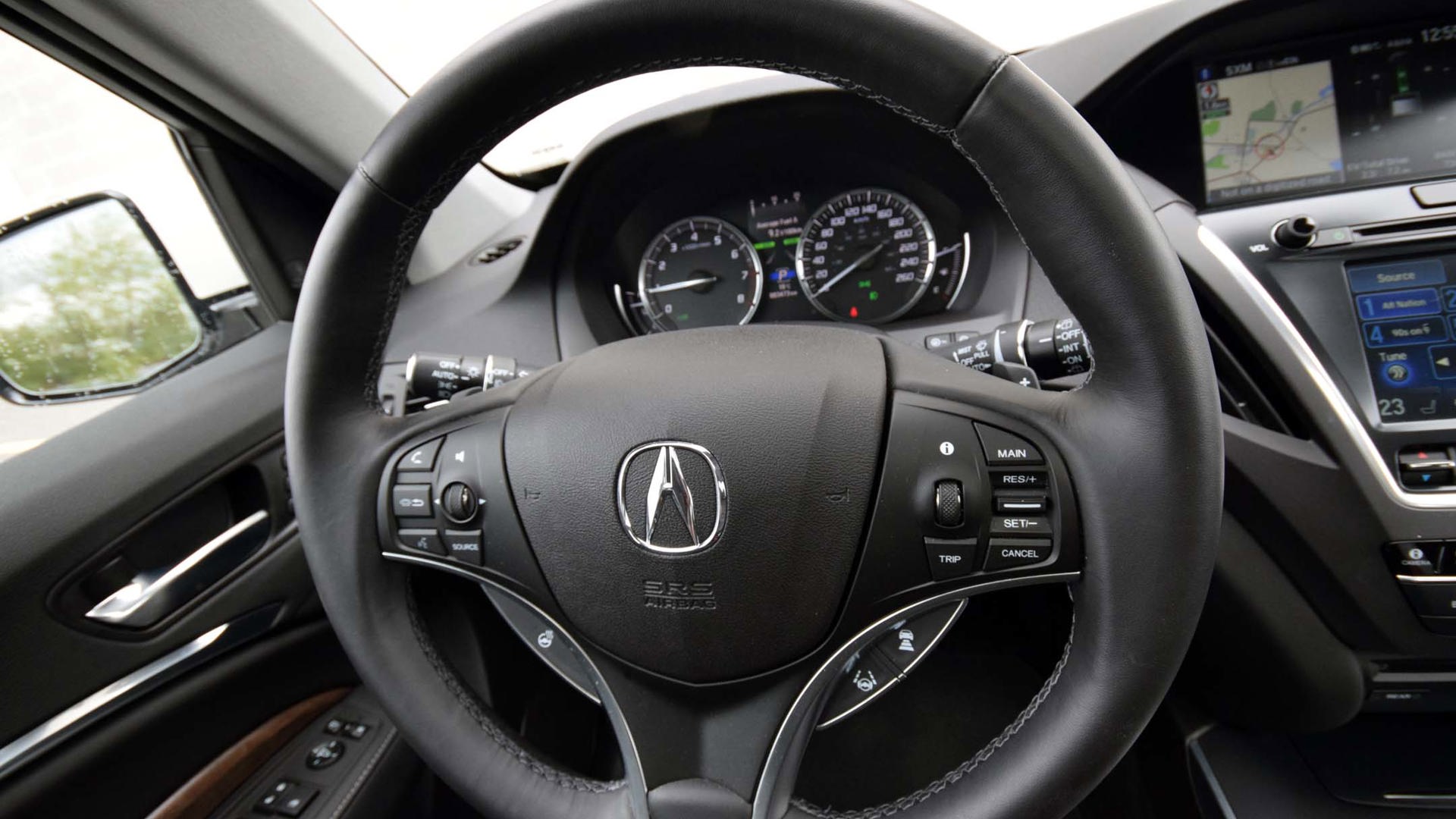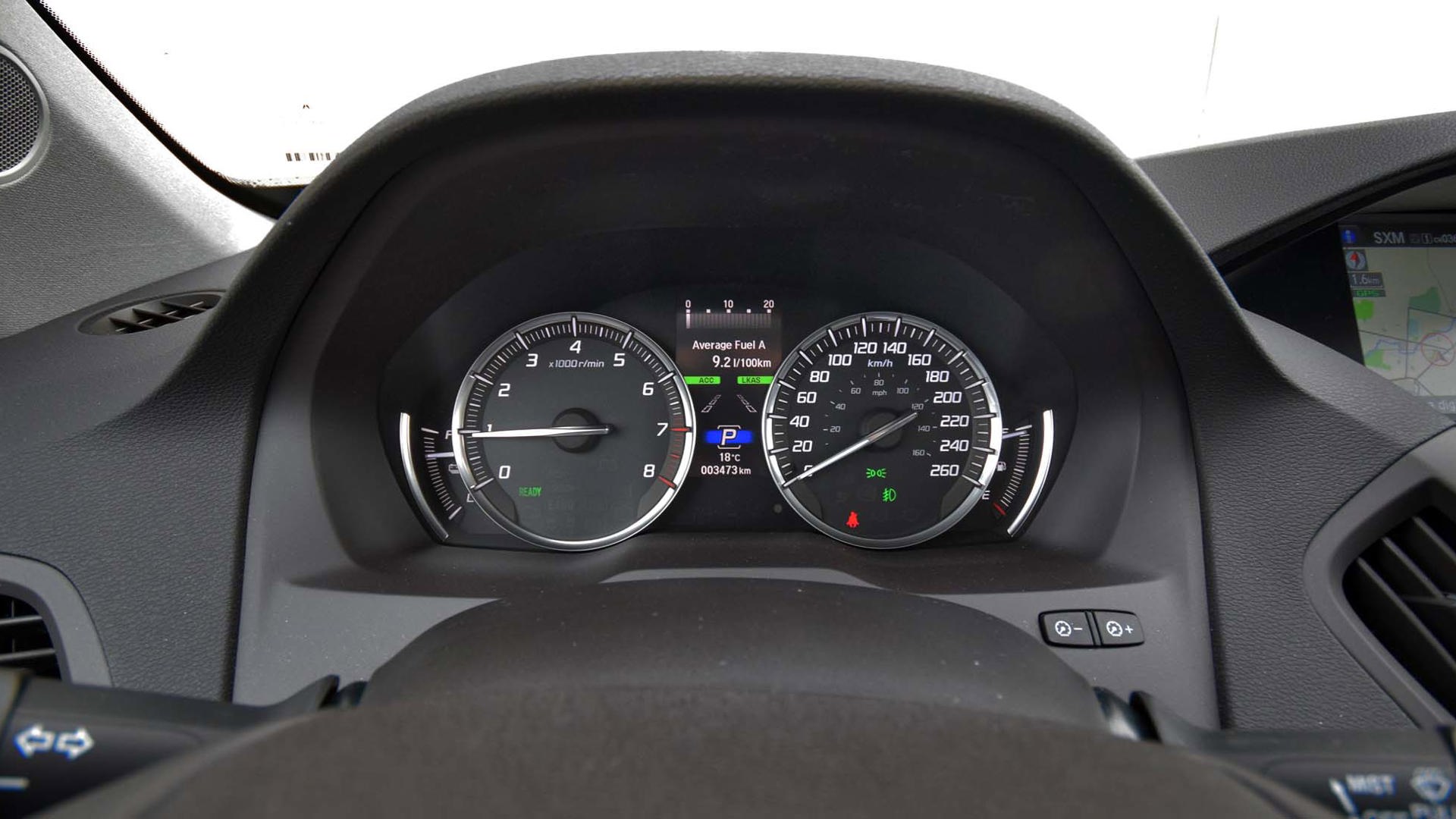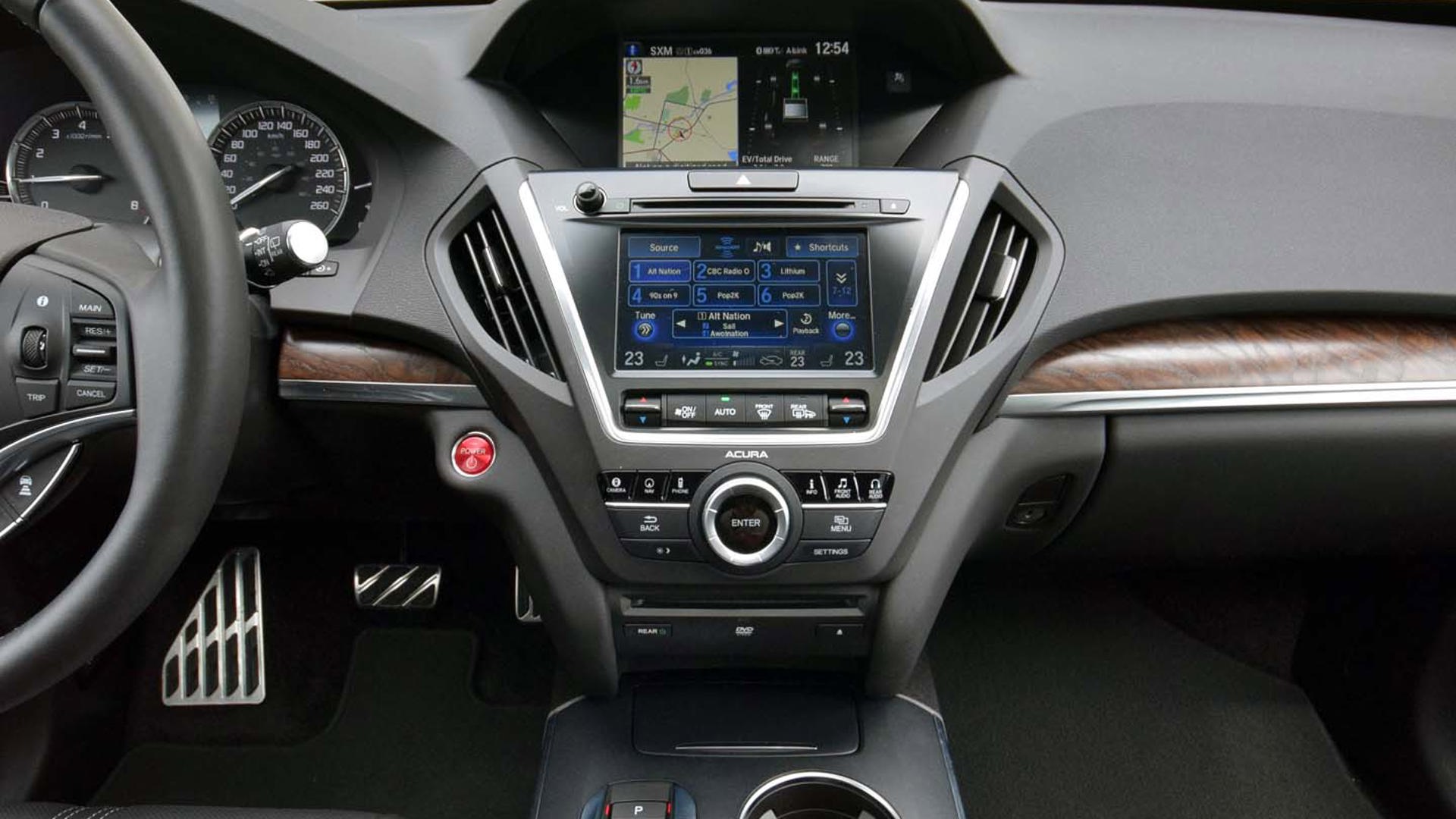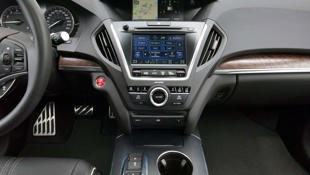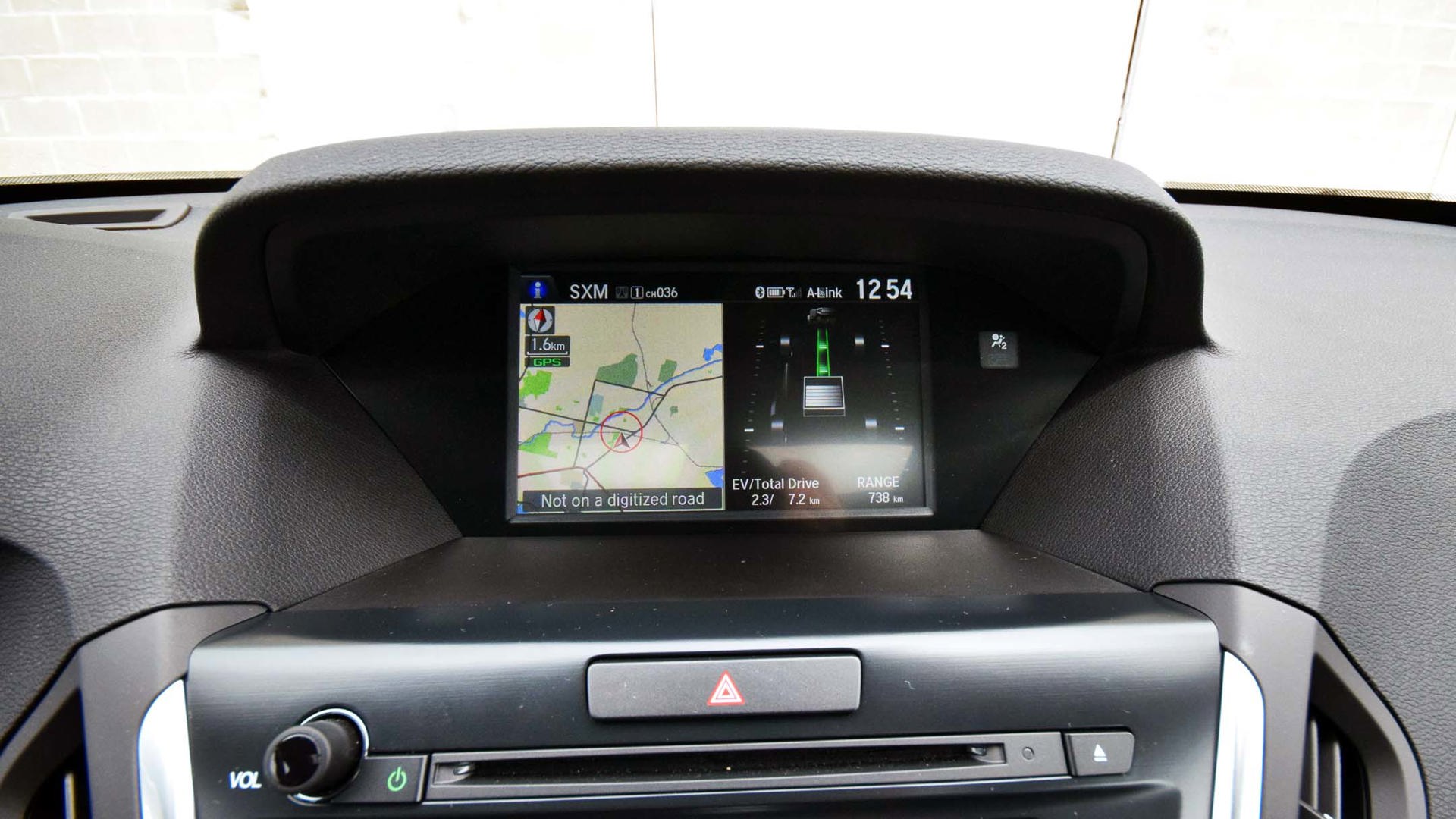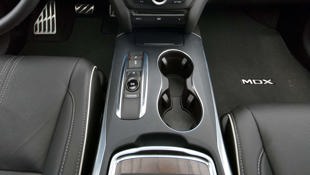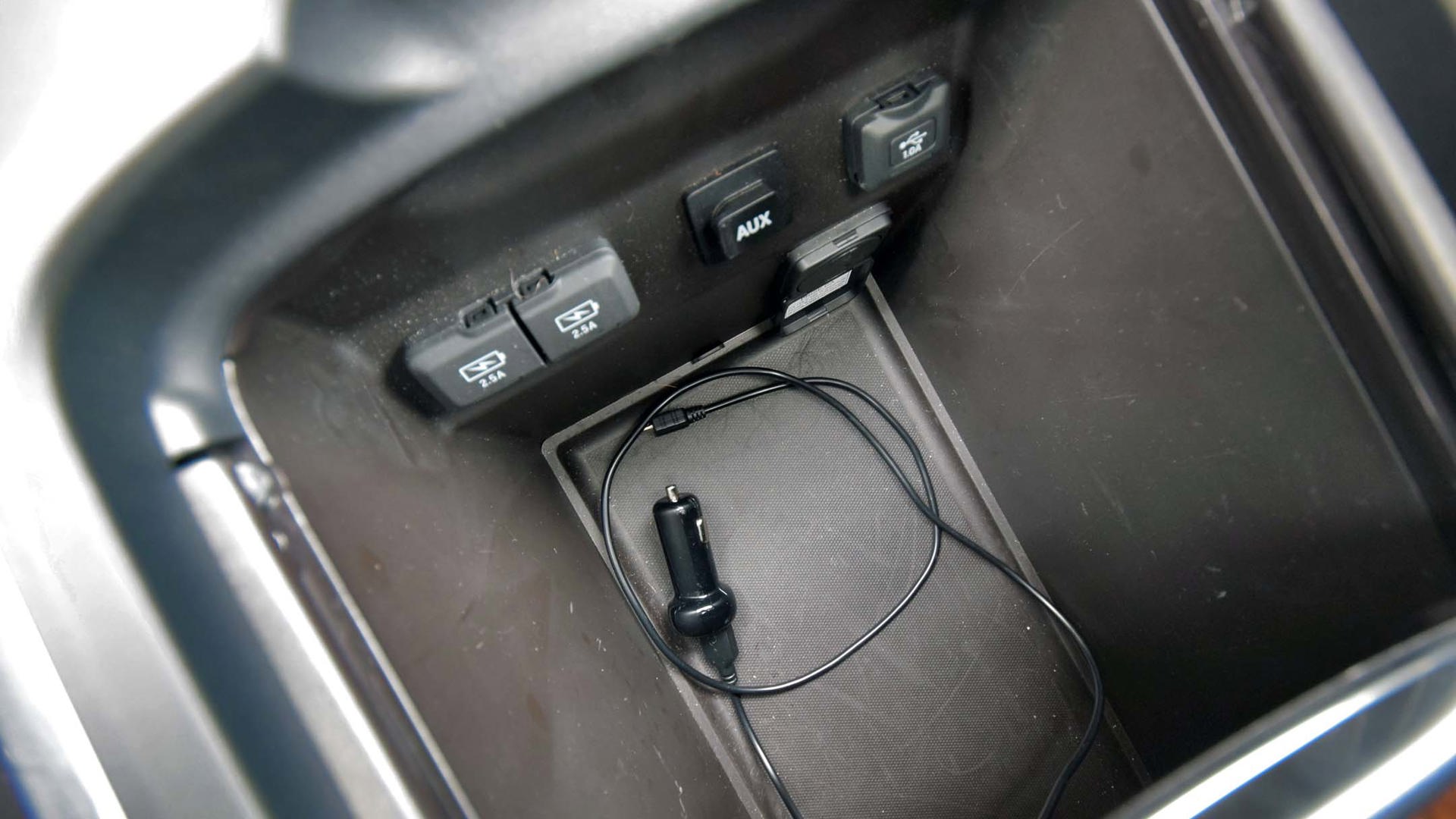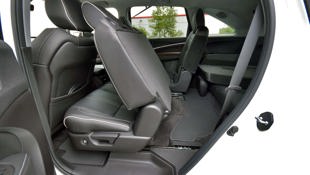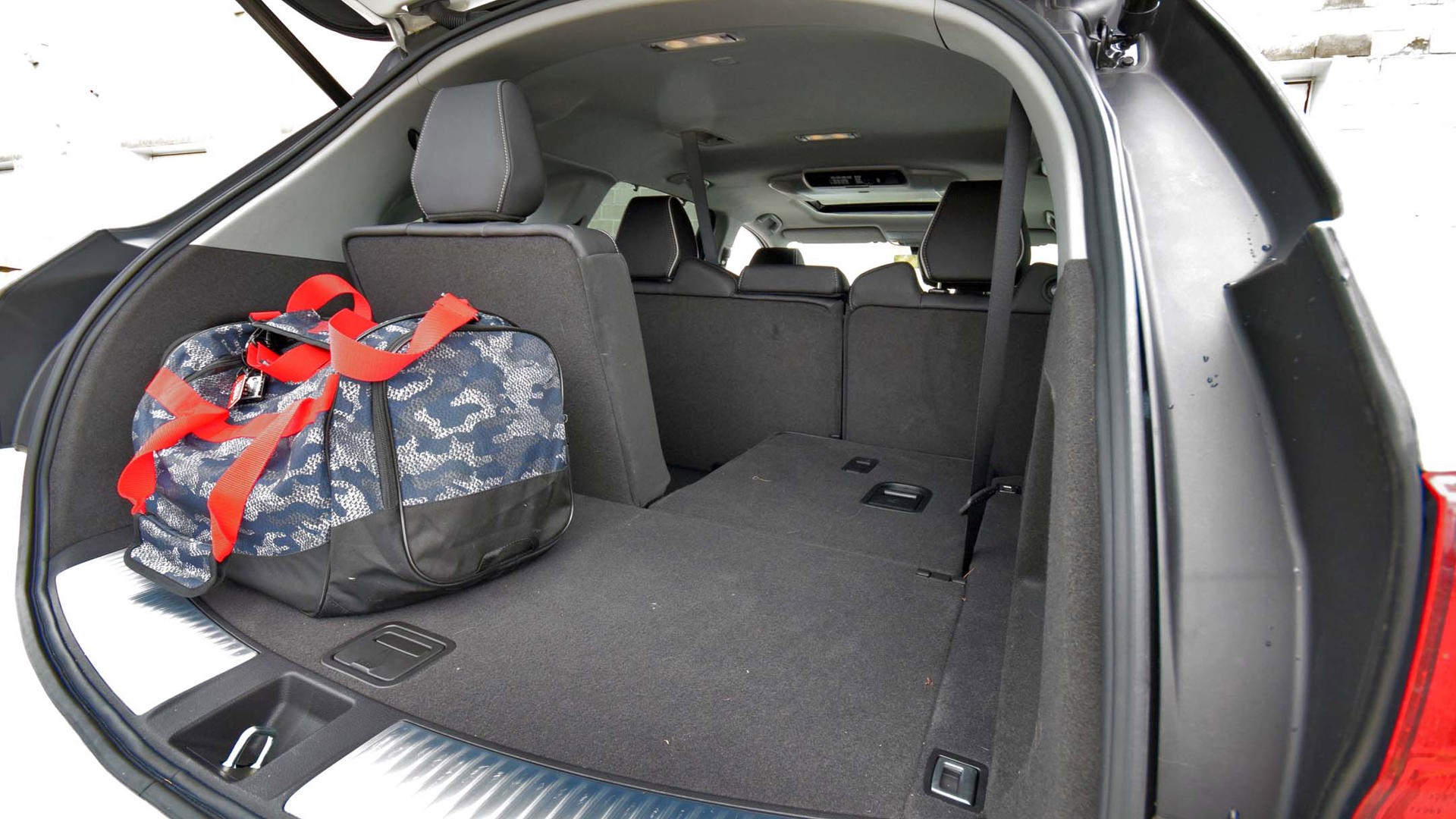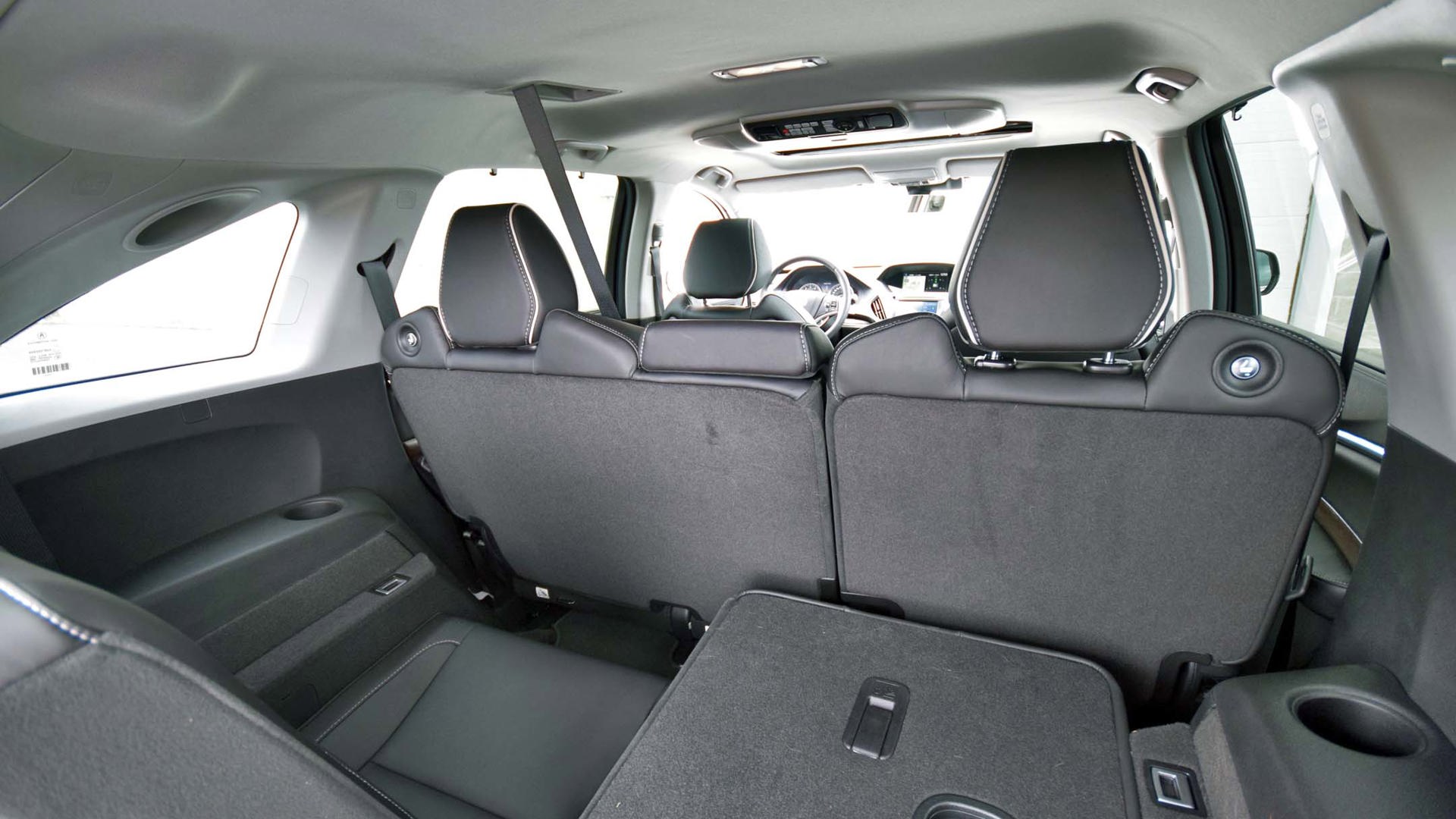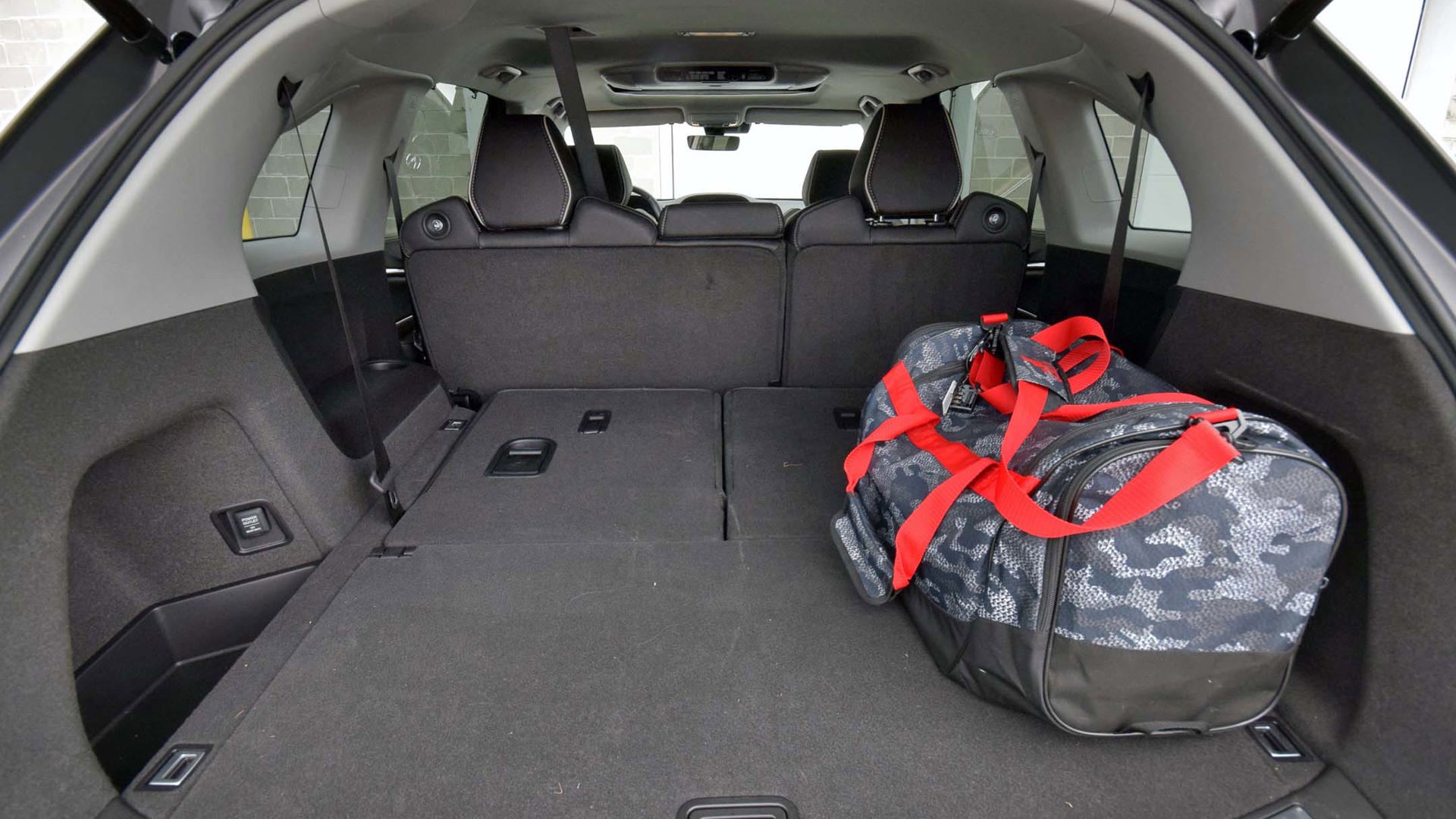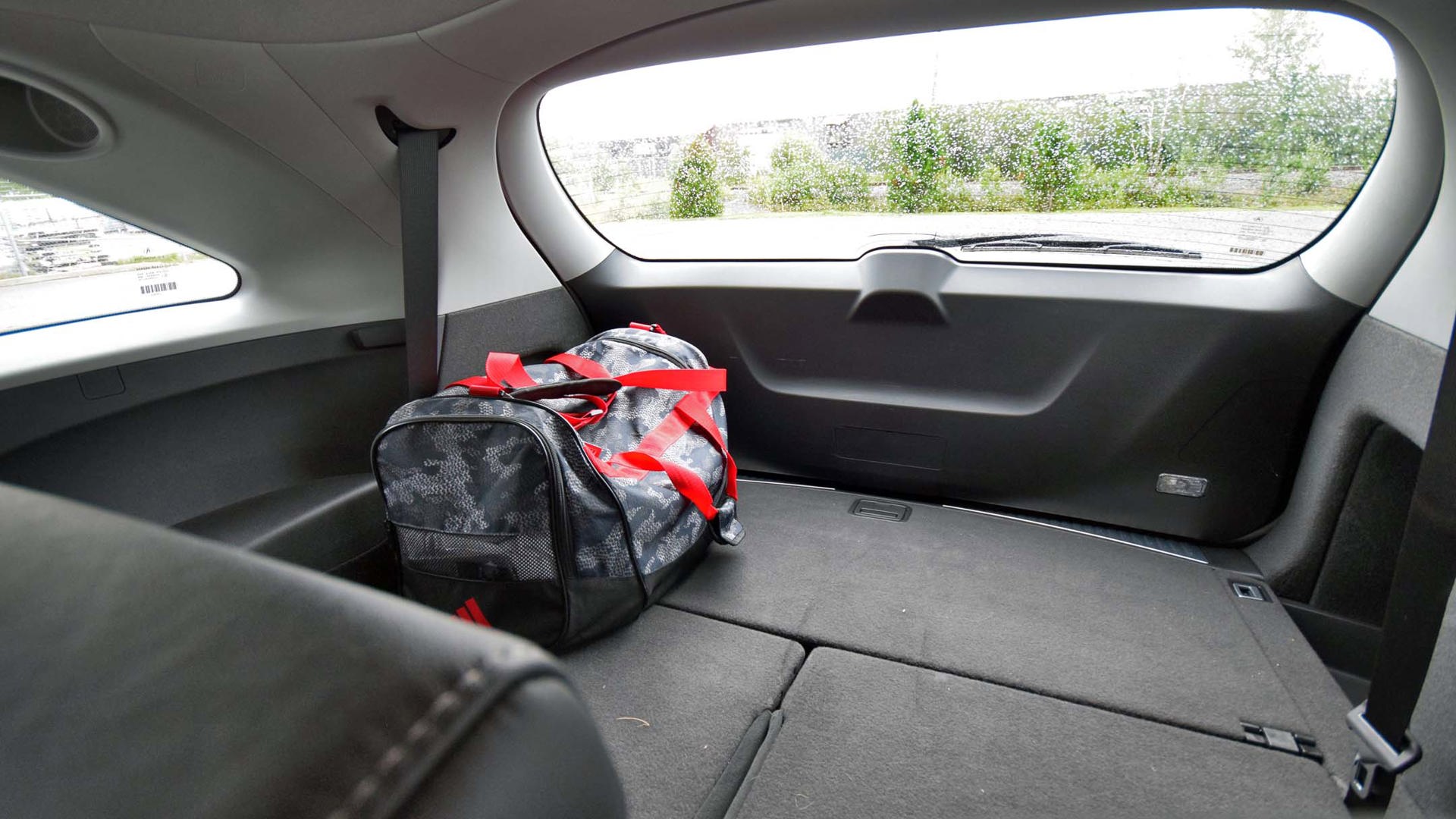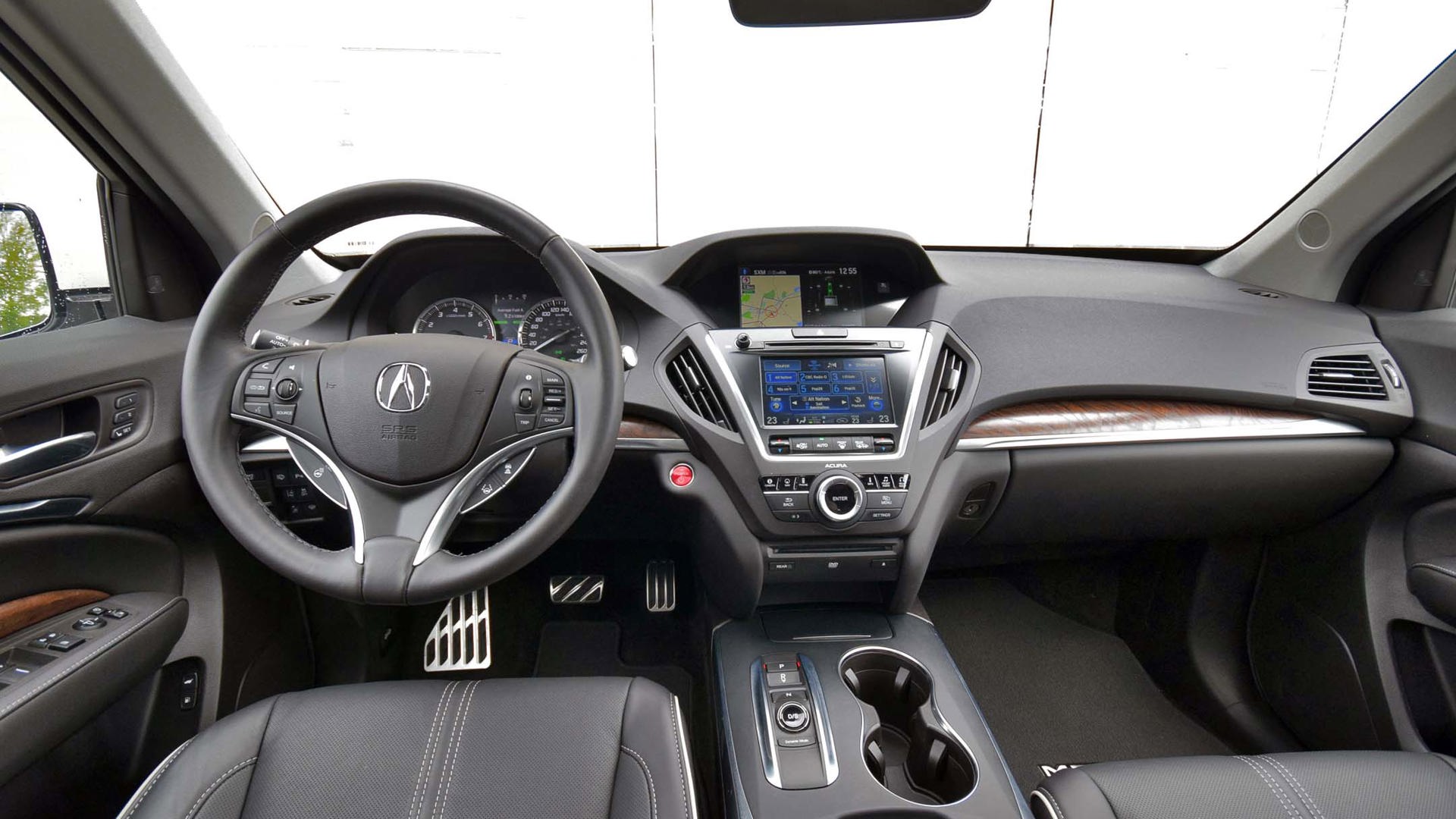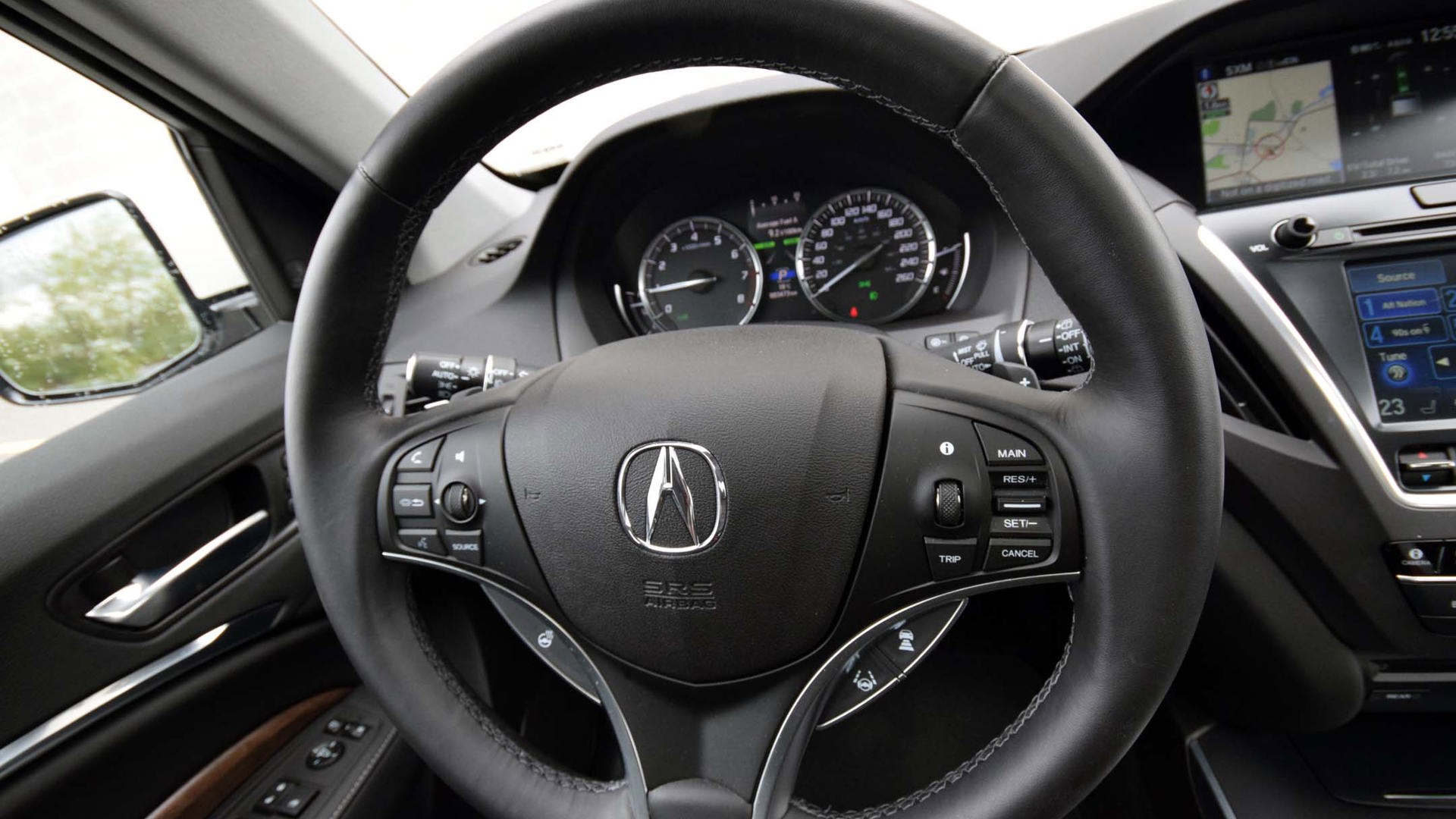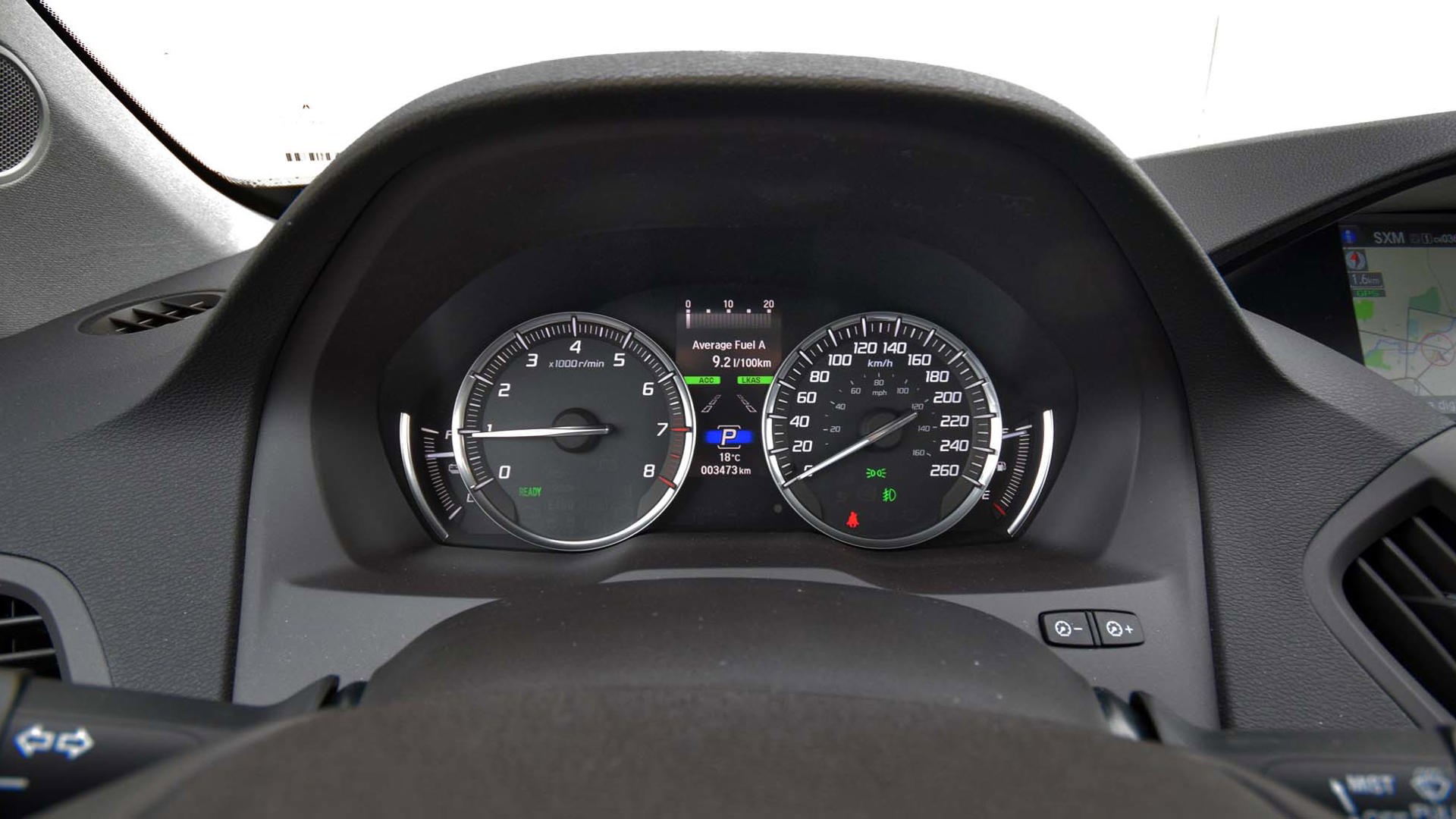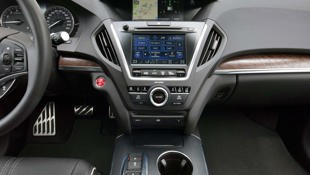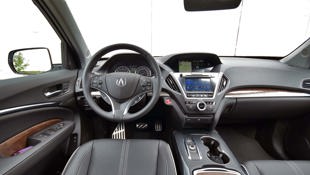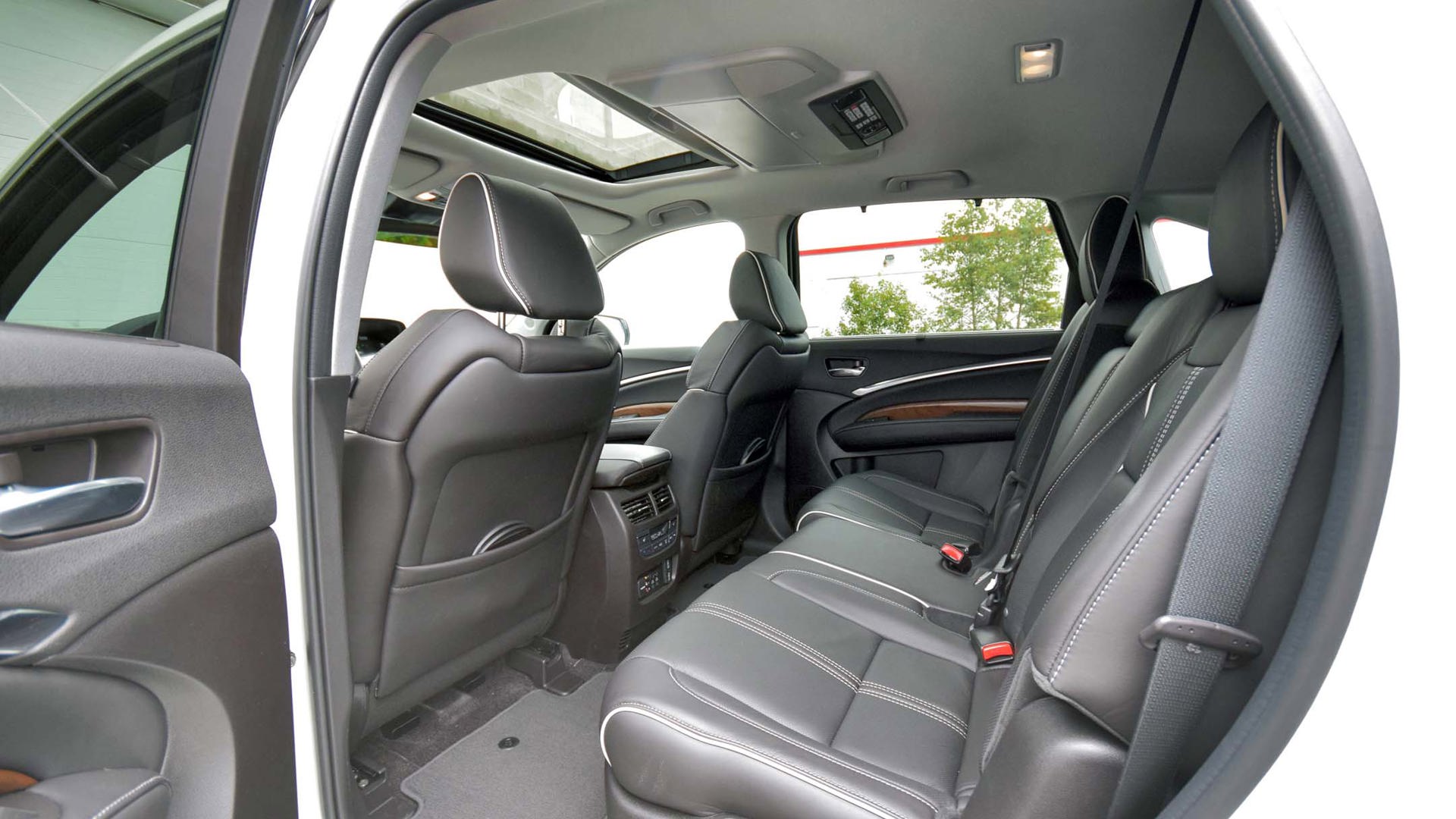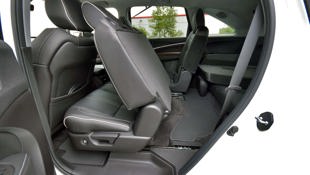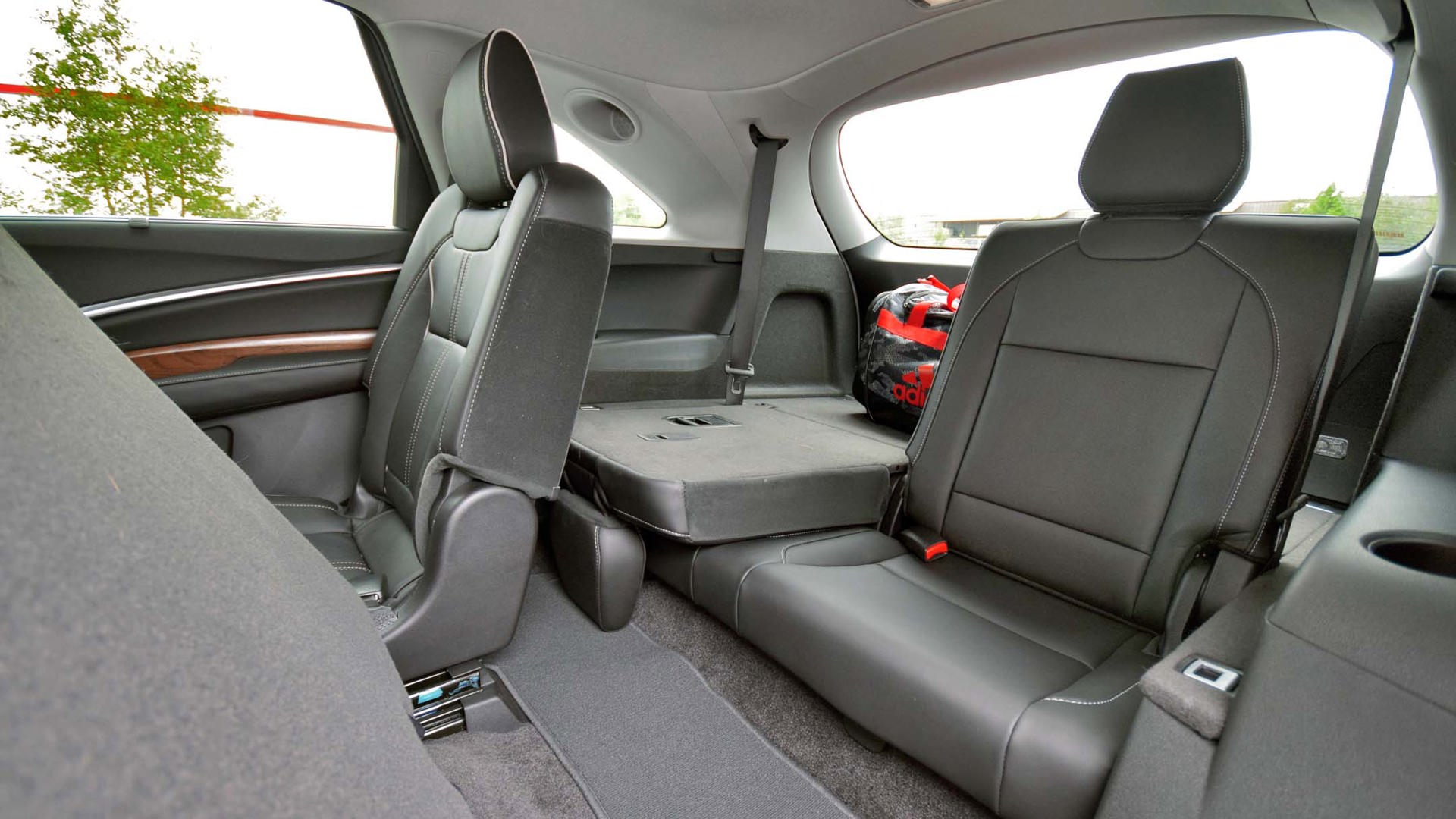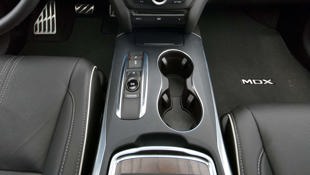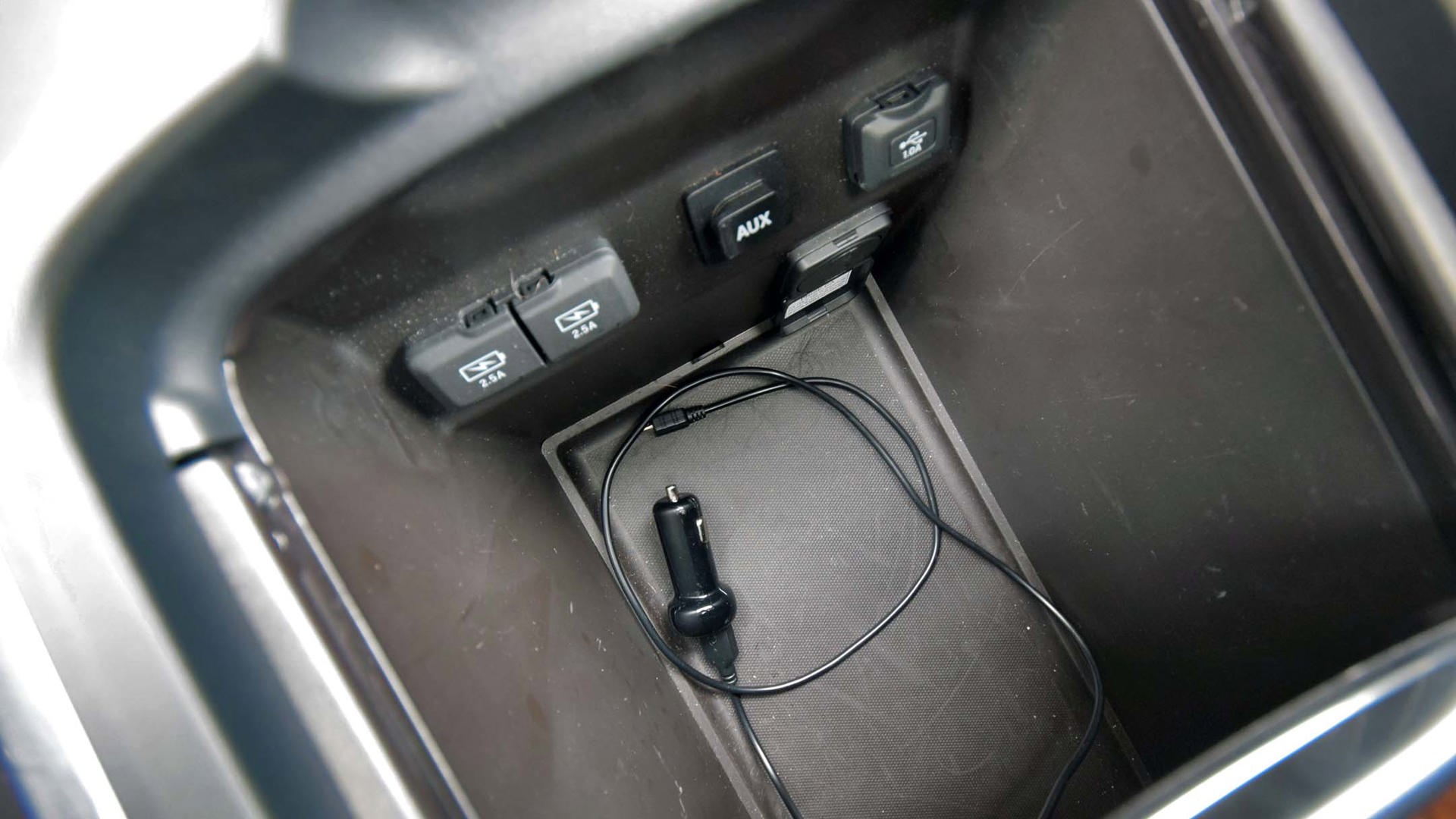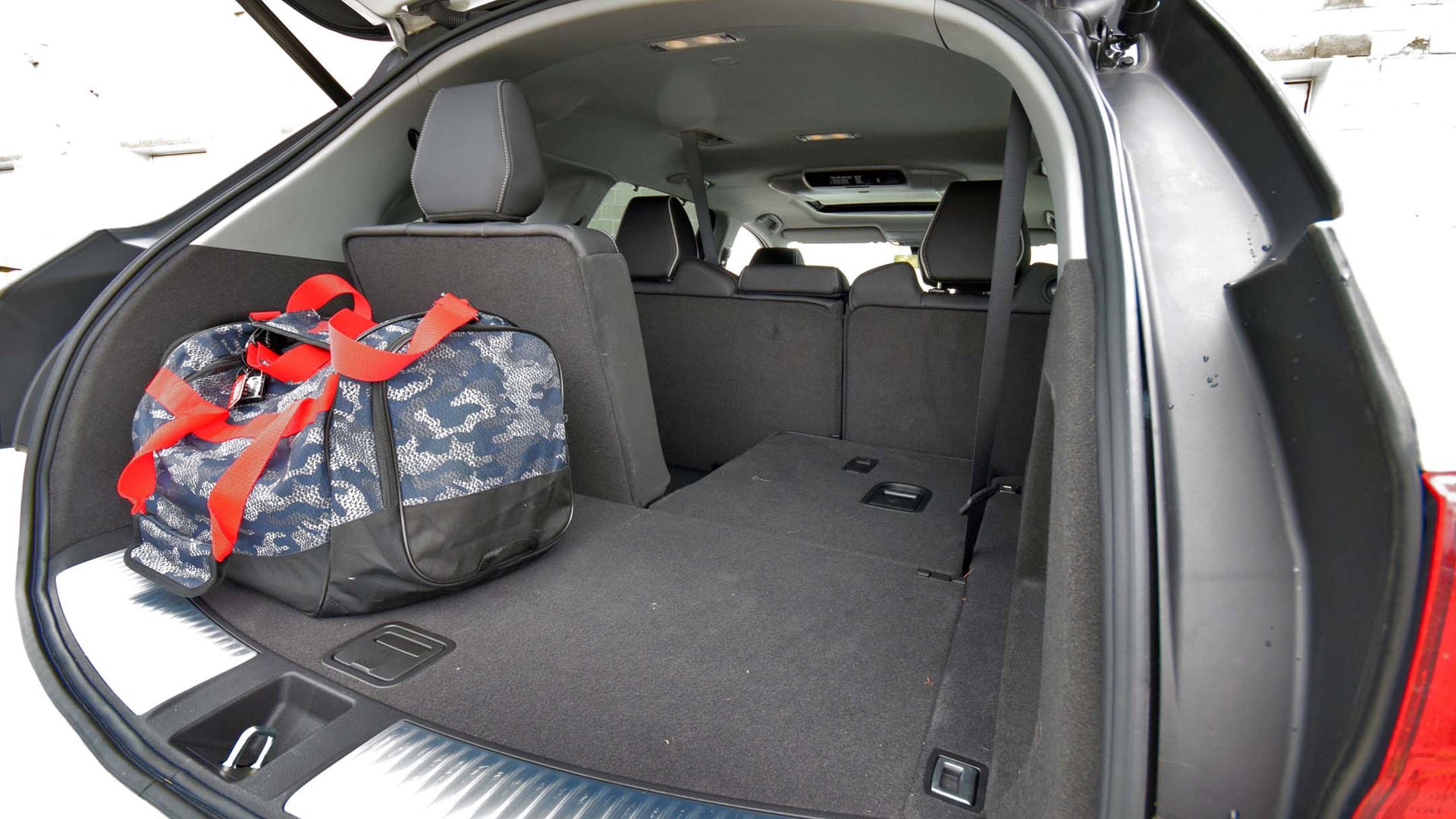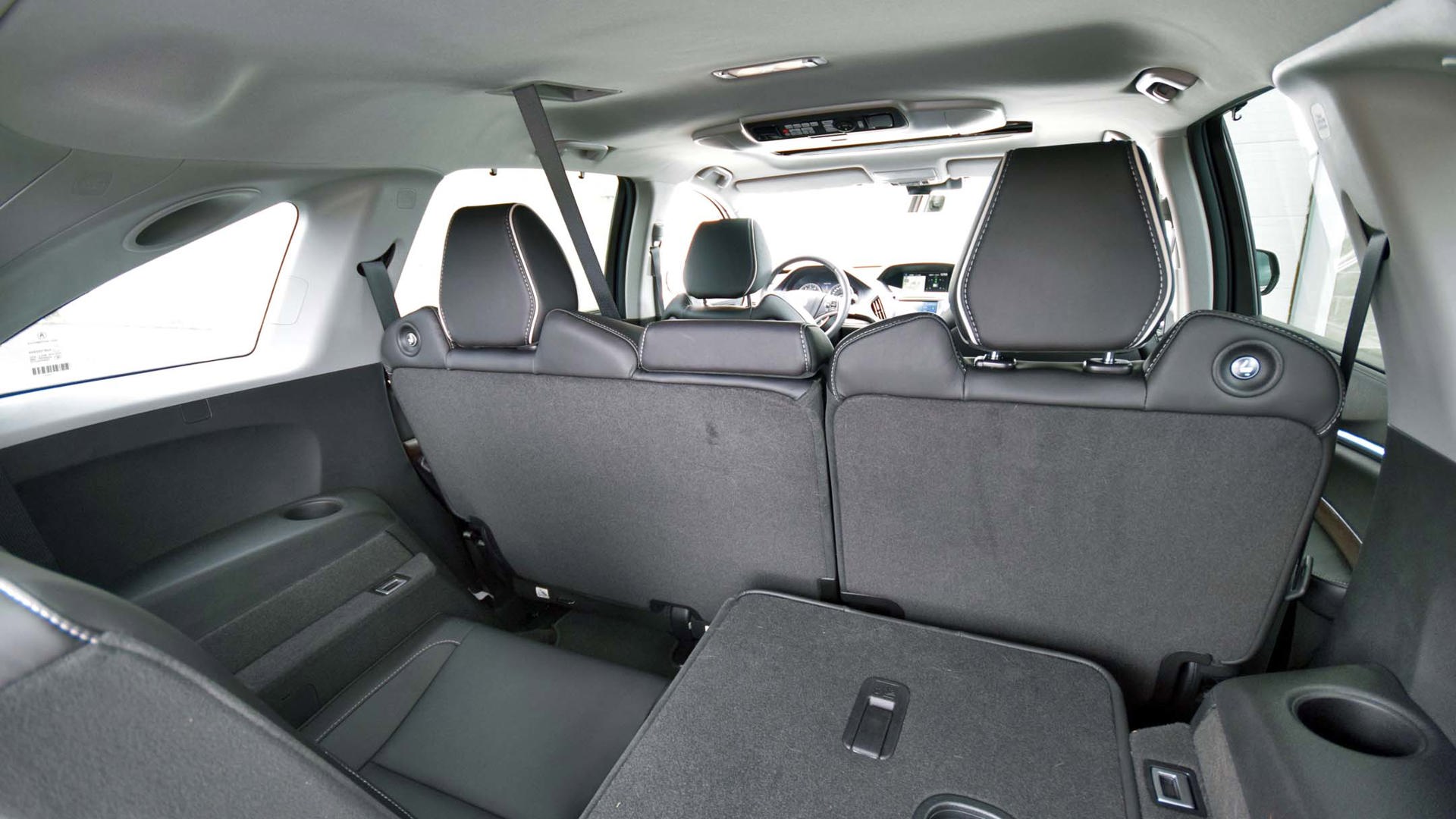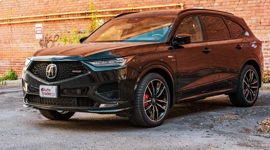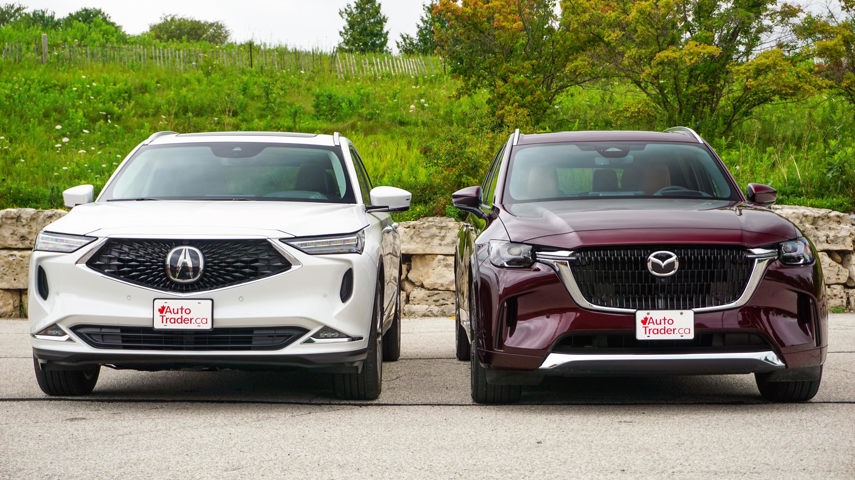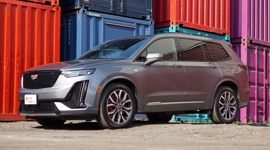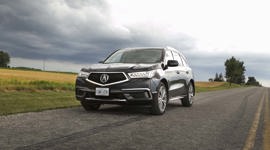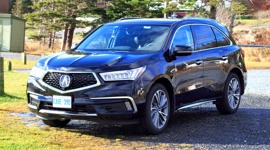 AutoTrader SCORE
AutoTrader SCORE
-
STYLING7/10
-
Safety9/10
-
PRACTICALITY9/10
-
USER-FRIENDLINESS8/10
-
FEATURES9/10
-
POWER9/10
-
COMFORT9/10
-
DRIVING FEEL8/10
-
FUEL ECONOMY9/10
-
VALUE7/10
Model year 2017 sees Acura’s SUV sales superstar wearing a revised body, packing new features, and conveying a more modern presence. It also debuts the brand’s first-ever hybrid SUV, and their most powerful, should shoppers opt for the subject of this story, the 2017 Acura MDX Sport Hybrid.
You get the sense that Acura engineers wanted this to feel as seamless as possible: more power, less fuel burned, no compromise.
With it, your investment of about $70,000 gets you all core MDX attributes propelled by a slick new win-win powertrain that makes more power while cutting emissions and fuel use. A down-sized 3.0L V6 and hybrid-electric system enable 321 hp and 289 lb-ft of torque. That’s 31 more ponies than the conventional MDX, additional torque slathered across the whole rev range, and all with a 25 percent improvement to the model’s NRCan fuel economy ratings.
There’s a seven-speed dual-clutch transmission (DCT), and a new Sport Hybrid AWD system, both of which are relatives of their component counterparts from the new Acura NSX.
The transmission has no torque converter, so there’s no energy-sucking churning of transmission fluid throughout, and the hybrid AWD system ditches the centre driveshaft and rear differential, replacing them with a battery pack, and sophisticated hybrid componentry including a so-called Twin-Motor Unit (TMU) that drives the rear wheels. Packaged into the location typically occupied by the rear diff, the TMU looks like a funny electric motor sandwich, but it’s key in taking Acura’s Super Handling All-Wheel Drive (SH-AWD) ideology to the next level.
That ideology largely involves over-driving a single rear wheel to effect some yaw moment to help turn the vehicle when drivers push. By using an electrically powered TMU instead of a mechanical driveshaft and differential, the system can create a wider difference in rear-wheel torque, even at lower speeds. Plus, since it doesn’t require any mechanical power, the rear half of this AWD system can do its job across a larger range of throttle inputs, even small ones. While one rear wheel is being over-driven in a corner, the other can even provide energy regeneration to recharge the battery.
And, with hybrid componentry mounted low and wide enough in the body to drop its centre of gravity a full inch, this partially electric, fuel-sipping version of the MDX is the most powerful, and stands to be the best-handling.
But, despite the constant blending and switching of torque, gasoline propulsion and electrons between and across its axles, and despite the ever-rampaging torrent of data coursing through various systems and modules beneath the MDX’s floor, it’s often fairly uneventful from the driver’s seat.
This is one of those hybrid vehicles that’s a compelling contender in its segment first, and a hybrid second. The MDX has long been a bestseller for delivering honest pricing, proven safety, satisfaction, and residual values. Second to much of that is how the machine drives. It’s comfy and well sorted and does, mostly, what a luxury crossover should – but many folks buy an MDX for all the sensible stuff, not the handling, performance, or steering feel.
So, you’re probably not buying an MDX for the way it drives, but I’m going to tell you about that, anyways.
Other than a few very minor modifications to the instrument cluster, the presence or lack of a few telltale sounds, and a hybrid power monitor that can be called up on the display, little about how the tester drove gave its hybrid identity away.
Press the Engine Start button, and the little V6, as needed, glides into action – without the sound of a starter motor, since there isn’t one. Prod the D button on the electronic shifter with your finger and set off, and the Sport Hybrid drives just as you’d expect in any other vehicle.
The electric motors fill in the low-rpm rev-range with abundant torque: at revs where the standard MDX is still rolling out of bed, the Sport Hybrid is already up and gone. Plant your right foot, and the seven-speed DCT quickly selects the right gear to bring revs to their sweet spot, with a layer of meaty electric torque speeding the machine along.
But other than the tachometer needle suddenly dropping to zero out of the lower corner of your eye from time to time, you’d barely know anything was up. With the climate control fan on, or the stereo at any sort of volume, you’re hard pressed to hear, or feel, or otherwise detect what the driveline is up to.
The MDX Sport Hybrid can cruise solely on stored electric power for brief periods, even at speed, and the kicking in and out of the gasoline engine happens fast, seamlessly, and virtually without any detectable lag or numbness from the throttle. You get the sense that Acura engineers wanted this to feel as seamless as possible: more power, less fuel burned, no compromise.
Ride quality ranges from softly comfortable to firmly comfortable, depending on the selected dynamic mode. In all modes, the suspension feels dense, durable, and nicely tuned towards a comfort-first ride that stiffens up a few notches when requested. Steering feels best in Sport mode during highway cruising, where added weight and effort at the wheel help the MDX lock into its lane. Around town, Comfort mode sees the steering become lighter and lazier, for effortless flicking of this hefty ute through traffic, parking spaces, and the like.
If you’re comparing, the MDX feels less heavyset and clamped on to the road than a comparable BMW X5, and the Volvo XC90 is in a similar ballpark for ride and handling feel.
Brake feel is typical hybrid: touchy at first, and somewhat vague and disconnected until drivers apply heavier force on the pedal, bringing the calipers and pads into action alongside regenerative braking. After a brief learning curve, your right foot will learn how to manipulate the brake pedal for more accuracy.
Performance-wise, the additional motor-driven torque available at any rpm means the tester felt more athletic than the modest 31 hp increase lets on, and heavy throttle inputs are met quickly by a good shove into your seatback. Best of all, the gasoline portion of the powertrain loves to spin fast, revs gleefully to redline, and makes a familiar family VTEC snarl when drivers explore the upper third of the rev range.
Three rows of seating are on offer, the rearmost of which can be folded flat quickly to open up a generous cargo area that’s ready for a big-dollar grocery run, a four-person weekend road trip’s worth of luggage, or a two-person extended camping trip’s worth of gear – canine in tow – with ease. When flipped up, rear-row seats are accessed easily by pressing a button on the outboard edge of the second-row perches, which then tip and slide out of the way to ease third-row entry. Rear seats can be physically occupied by full-sized adults, though they’re too tight for comfortable long-distance travels, and are likely best left for kids.
The driver’s environment impresses more for its layout and thoughtful touches than overall design. Wood, dark plastics, and aluminum trim are all deployed towards an upscale feel that’s quiet and restrained. It’s deeply three-dimensional, but not overly flashy or seemingly intended to wow any socks off. Many interfaces and controls are familiar from other Honda and Acura products, and the atmosphere is luxurious, though some drivers may wish for more personality and flair.
There’s redemption via an overabundance of nearby storage, including a two-tiered covered centre console lid mounted atop a deep bin with a reconfigurable divider tray. In here, multiple high-output charging ports help ensure MDX families have little issue staying tidy, organized and charged up on the move. Notably, there’s a household power outlet in that centre bin, itself large enough to swallow a small laptop or a camera kit with a few extra lenses.
Nearby, a major gripe-point is mounted front and centre in the MDX’s dashboard. The central display interface is in desperate need of an update, and lacks segment-competitive graphical firepower and resolution. Many a $70,000 SUV packs a widescreen display with vivid, liquid-smooth graphics for maps, interfaces and the like, where the MDX’s display output looks like a carryover from 2008. It’s a Nintendo GameCube, in a world of Playstation 4’s. Worst of all, it’s mounted just a foot or so above the techy-looking gearshift console, which looks like it came from the future.
No gripes about the mileage, though. Even with several hundred kilometres of highway cruising at a good clip, my test average over about 1,400 kilometres landed at a measured-by-hand 8.6 L/100 km. The trip computer suggested 9.1, if you trust that more. In any case, that’s better mileage than I logged in the latest Honda CR-V, which is smaller, and a lot less powerful. The technology works.
End of the day, here’s a highly accommodating and thoughtfully laid-out posh-ute that hits hardest for its promise of a no-nonsense long-haul ownership experience, with most driving dynamics following closely behind. Though some may find the cabin bland and the central interface to be too old school, the MDX Sport Hybrid is a solid choice for the shopper after small crossover mileage in a big-crossover package – with extra hybrid-powered performance punch.
| Engine Displacement | 3.0L |
|---|---|
| Engine Cylinders | V6 |
| Peak Horsepower | 321 hp @ 6,300 rpm |
| Peak Torque | 289 lb-ft @ 5,000 rpm |
| Fuel Economy | 9.1/9.0/9.0 L/100 km cty/hwy/cmb |
| Cargo Space | 422 L/2,575 L seats down |
| Model Tested | 2017 Acura MDX Sport Hybrid |
| Base Price | $69,990 |
| A/C Tax | $100 |
| Destination Fee | $2,045 |
| Price as Tested | $72,135 |
|
Optional Equipment
None
|
|
